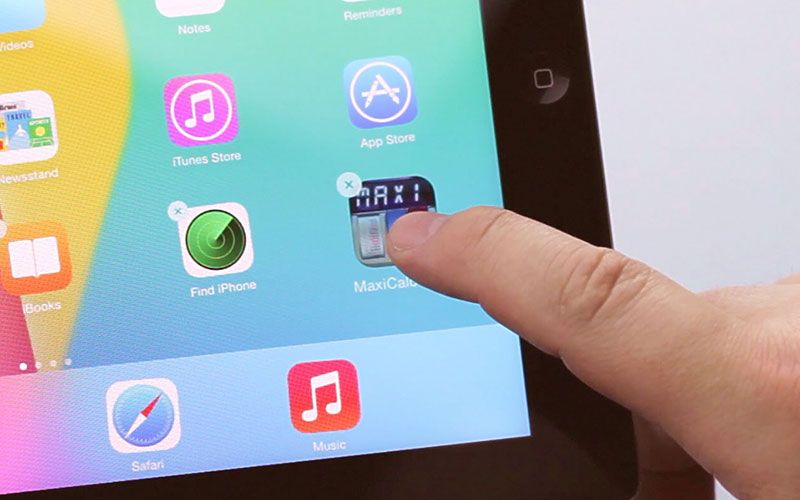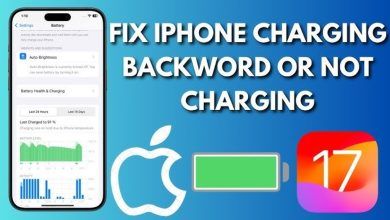
Storage space on your smart phone: how to move apps to a micro SD card on Android
When it comes time to choose a smart phone, one of the parameters that we pay less attention to is the internal storage space. If it is high-end, because it is assumed that it will be sufficient for the use that we will give it, and if it is low-end , in many cases because we only pay attention to the price and we are not very clear about the implications of this characteristic.
But in both cases, the paradox can arise that after a few weeks or a few months the fateful message appears that the mobile phone is running out of free space.
Most smart phones have an expansion slot to install additional memory in the form of micro SD cards with capacities ranging from 16 GB to 64 GB or even more to exceed even 200 GB. In some cases, however, we do not have this expansion slot and we depend only on the internal memory.
However, even if you install a high- capacity micro SD card , the message that free space is running out may also appear.
Why do we run out of space?

If we have a smart phone with 64 GB or more of internal storage space , for practical purposes it will be difficult for you to run out of space. And if you use an additional micro SD card, you will not have to worry about the internal storage chapter unless you are a user who is especially avid for applications.
With 32 GB or less of internal memory, the situation changes. To those 32 GB, 16 GB or even 8 GB of internal storage space you have to subtract about 4 – 6 GB of space occupied by the operating system , plus another 2 GB or 3 GB for the cache of the applications. And if we are perfectionists, plus another 2 – 3 GB of free space that is convenient to reserve to prevent the phone from starting to “do weird things”.
In total, for a mobile with 16 GB of internal storage, we are left with a mere 8 GB of free space to install applications and save photos, documents and other content such as music or video.
Even if we keep the photos, videos and other contents in a micro SD card, if we install many applications, we will fill the internal memory for a simple reason: the operating system chooses the internal memory to install apps to be, in general, more fast than the micro SD memory.
In addition, there are applications that use, in turn, the internal memory to store content, as is the case with some audio recorders. In these cases, not even 32 GB of internal memory can be enough , not to mention mobile phones with only 8 GB of internal memory.
The solution: move the applications to the micro SD

This solution may seem the most logical and sensible. And, in fact, unless you have a very old Android version, the operating system itself offers the possibility of moving apps to the micro SD card without having to perform rooting operations. That is, without having to “tune” the smartphone to install applications. with full access to the phone.
Moving apps to the micro SD card will allow us to have an important additional space depending on which applications we move, of course. The fine print is that not all apps can be moved to external memory . All in all, it is a good tactic that will allow us to spend a little more time on the life of our terminal.
The options related to storage are found in the system settings within a section with a name that varies depending on the version of the system, but usually contains the word “storage” or “memory and storage”.
Before continuing, it is important to note that some manufacturers such as Huawei have disabled the option to move the apps to the micro SD card, but in other terminals it should be active,
Inside the section of storage we will find in turn the option of choosing the internal or the external one. If we choose the internal, we will go to another menu where we can choose the option of “applications”, a section to manage individual apps . This is where we will have to go to move the apps to the micro SD memory.
If we click on the app that we want to move, a screen with information about it will appear , as well as an option to choose the place where it is installed.
In this case we have a section that says “Memory in use” with a “FOLLOW” button. If we click on it we can choose where the app will be located . In the internal memory as it was until now, or in the micro SD memory.
If we choose the option of the SD Card, we will go to the point where we will be asked for the last confirmation before moving the app to the external memory . Depending on the application and the speed of the memory card, we can observe more or less slowness in the use of the app. Remember that micro SD memories, in general, are slower than internal memory.
With this operation we will be able to release megaphones from our mobile phone to make room for any other application or photos or any other type of content that we have to handle on a regular basis and that can not be on the micro SD card.
At the same time, it is a simple procedure, as long as it is enabled by the manufacturer in the operating system. Not all apps can move, in which case the option to change the type of storage where the application is installed will not appear.
What card do I use?

There are many micro SD cards . Of different capacities, prices and brands. In the event that you are going to use the card to install applications, ideally you should choose a model with a capacity of at least 32 GB and the maximum possible speed. In this way, the slowdown will not be as obvious as in the case of choosing a low speed card.
Sometimes the operating system itself is able to identify slow cards , or with a low capacity, which means that it is not recommended to use them for intensive use such as being a support to install apps.
The micro SD cards are characterized by their capacity and speed. Class 10 or UHS type (Ultra High Speed) U1 or U3 are especially recommended , although the price is higher as well. Recently, San Disk has introduced specially optimized micro SD cards for the installation of applications. They are the San Disk Ultra with the A1 specification designed for optimal use of applications.
Like everything, the choice will also depend on the price. Those with more capacity and faster are still expensive. Good, but expensive. For a “normal” use it is not necessary to go for the faster models , especially if we are going to use it with a mid-range or low-end terminal. The card may cost more than the mobile. With a class 10 card we can save the file.
Android Storage Managers to Unlock And Storage Space
Now smart phones have become a common household appliance for modern people and people have become dependent on these devices. We use these devices for our daily work along with our entertainment. In this digital age, people of all ages, organizations, companies are communicating quickly via cell phone, creating important documents from time to time such as text files, photos, audio & video content, etc. Then, the storage of data is very important because this digital data has great important value for future references.
Data can be stored in the main storage such as RAM or “Built-in” secondary storage such as USB devices, SD cards or storage applications. And Android has several options to store digital data.
- Internal storage
- External storage
Android has different options for internal storage or external storage to store our application data. Therefore, now you do not need to delete your data from your Android device to free up space just to keep new data. Just check your data storage & manage the data appropriately on your Android devices.
Storage space and internal memory difference?

Often the users of computers, tablets and smart phones realize that their storage space is lower than the internal memory stipulated by the manufacturer in the technical specifications of the equipment.
Consequently, they feel that the advertising of the product is misleading, since the volume of Gigas available to save images, music, videos, applications and other content of interest greatly influences the purchase decision.
The problem lies in a confusion of concepts that are worth clarifying, and of which there is no conclusive evidence to confirm that the producers generated it to boost their sales. Let’s see.
Internal memory
It is the space where the developer installs the operating system, the native applications, software and other functionalities with which the team will go on sale, leaving a free field for the user to save more information of their preference. Its storage space is represented in GB (Gigabytes), and is what appears in the technical specifications of each device.
Storage Space
It is the balance of GB after the developer installs the software mentioned in the previous point, and without which the device could not work. In short, it is the real storage field that the manufacturer gives the user to store information and content. Obviously it is a lower capacity than the one offered by the equipment manufacturer, because it does not clarify between one concept and another.
A matter of transparency
Once the differences are defined, it can be said that the device does have the internal memory offered by the producers, only that it is far from the storage space provided to the user.
That is, for example, that in a certain 32 GB smart phone I will not be able to store that amount of content because a large part of that storage space was used to install the heart of the computer: its operating system.
Knowing a prior how much space was used for the software of the team is somewhat complex because it depends on the developer and the brand of the product, to which must be added the native applications and functions that the manufacturer has included. However , an average is estimated between 3.5 GB and 7 GB in most phones .
A clear example of what has been said above is what happens with the iPhone and its iOS 8 operating system, which occupies approximately 3.5 GB. Compared with the Sony Xperia Z3, which leaves 11.6 GB of the total 16 space.
A solution
The most logical thing would be for manufacturers to clarify in the technical specifications of their equipment how many GB the operating system occupies and the applications installed by default, so that the user knows the actual storage space.
As that does not happen, a common alternative is to use external memories or Micro-SD . But do not forget that these can not be used to install important Apps and soft wares, which limits their possibilities.
Likewise, it is worth noting that we should not direct complaints and claims to sellers and distributors, since they have nothing to do with the process of development and manufacturing in general.
If you are not sure of these data when buying, it is important that you go to specialized sources or relevant information in thematic forums, where they give you lights to make a decision that you will not regret.
Finally, manage the use of the internal memory of our smart phone, not only help us eliminate unnecessary files, but also improve their performance. Although, nowadays, the new smart phones bring with them a greater amount of storage space in gigabytes, these seem to be not enough for the conglomerate of files that we usually generate.



